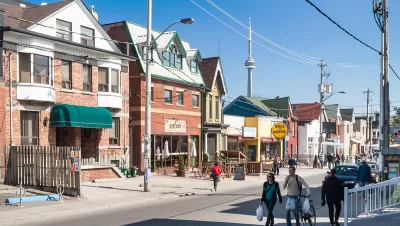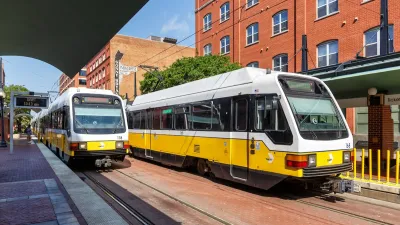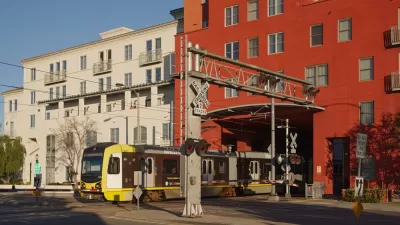Walkability and density have been studied closely, and now their worth has been quantified and proven, according to Brent Toderian in a piece for Metro Toronto.

Brent Toderian argues in an editorial for Metro Toronto that many common misconceptions about planning can be dispelled with a numbers-based approach. While he concedes, with a Yogi Berra-type turn of phrase, that "Not all that counts can be counted," many assertions about the value of walkability and multimodal transit have been tested and studied and the numbers prove the worth of both.
Citing a study finding that compact development, on average, costs 38 percent less in up-front infrastructure and 10 percent less in ongoing service delivery than conventional suburban development. Compact development also generates 10 times more per acre in tax revenue, according to the study. Toderian's writing also highlights further benefits to residents and governments: "That crime goes down as density goes up. That providing housing for the homeless actually saves public money. That you can move more people on a street when car lanes are replaced by well-designed space for walking, biking and transit."
FULL STORY: Math myth-busting some of our worst urban planning misconceptions

Maui's Vacation Rental Debate Turns Ugly
Verbal attacks, misinformation campaigns and fistfights plague a high-stakes debate to convert thousands of vacation rentals into long-term housing.

Planetizen Federal Action Tracker
A weekly monitor of how Trump’s orders and actions are impacting planners and planning in America.

San Francisco Suspends Traffic Calming Amidst Record Deaths
Citing “a challenging fiscal landscape,” the city will cease the program on the heels of 42 traffic deaths, including 24 pedestrians.

Defunct Pittsburgh Power Plant to Become Residential Tower
A decommissioned steam heat plant will be redeveloped into almost 100 affordable housing units.

Trump Prompts Restructuring of Transportation Research Board in “Unprecedented Overreach”
The TRB has eliminated more than half of its committees including those focused on climate, equity, and cities.

Amtrak Rolls Out New Orleans to Alabama “Mardi Gras” Train
The new service will operate morning and evening departures between Mobile and New Orleans.
Urban Design for Planners 1: Software Tools
This six-course series explores essential urban design concepts using open source software and equips planners with the tools they need to participate fully in the urban design process.
Planning for Universal Design
Learn the tools for implementing Universal Design in planning regulations.
Heyer Gruel & Associates PA
JM Goldson LLC
Custer County Colorado
City of Camden Redevelopment Agency
City of Astoria
Transportation Research & Education Center (TREC) at Portland State University
Jefferson Parish Government
Camden Redevelopment Agency
City of Claremont





























